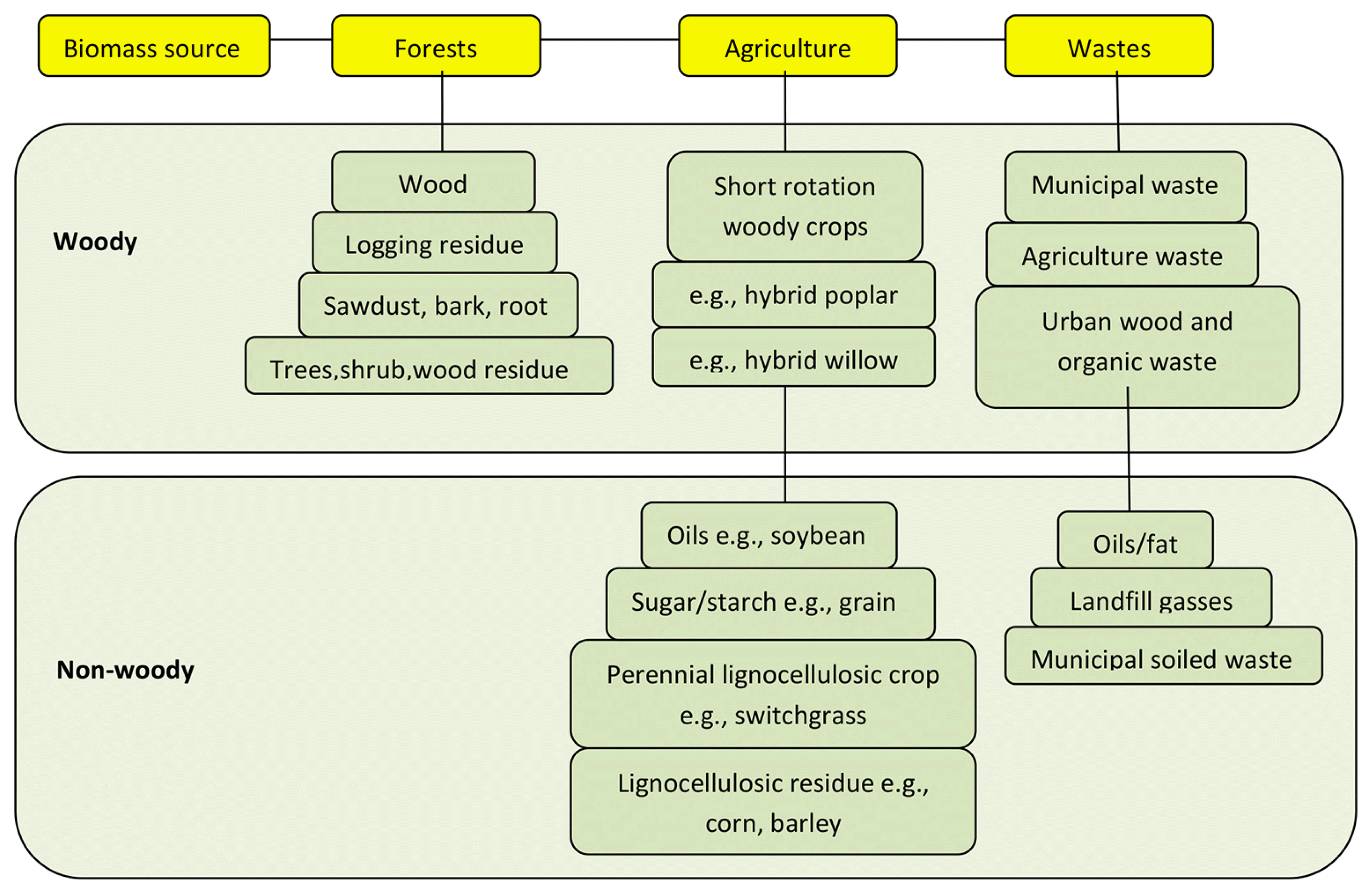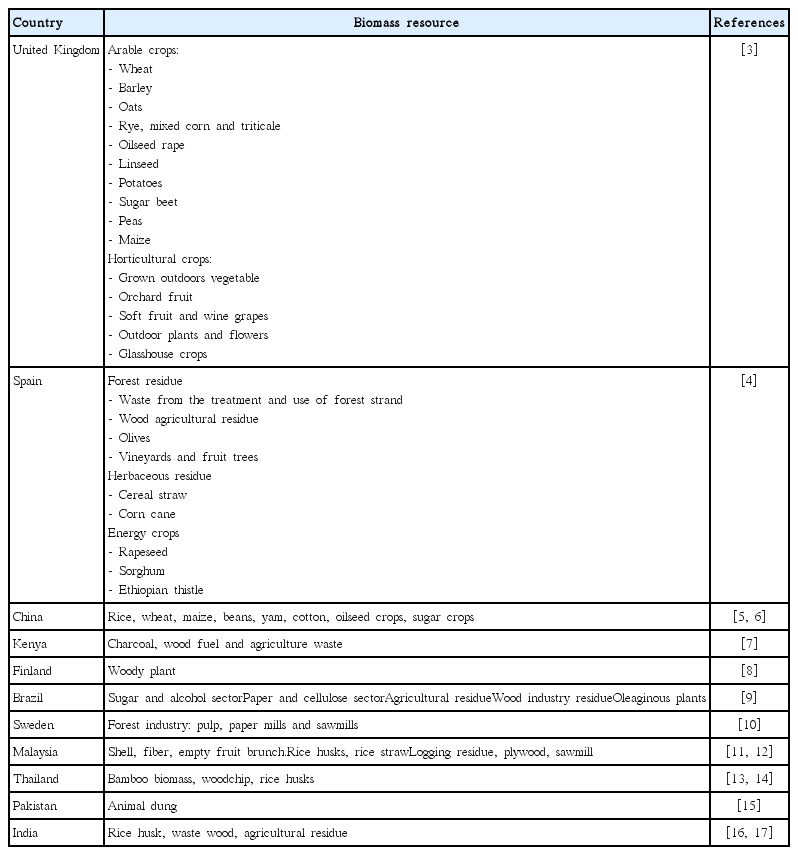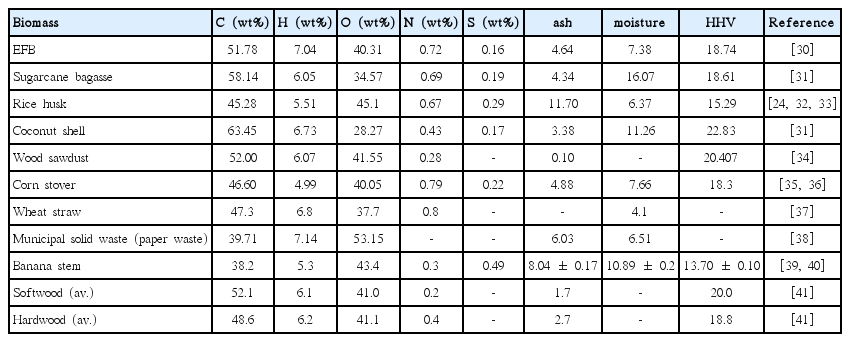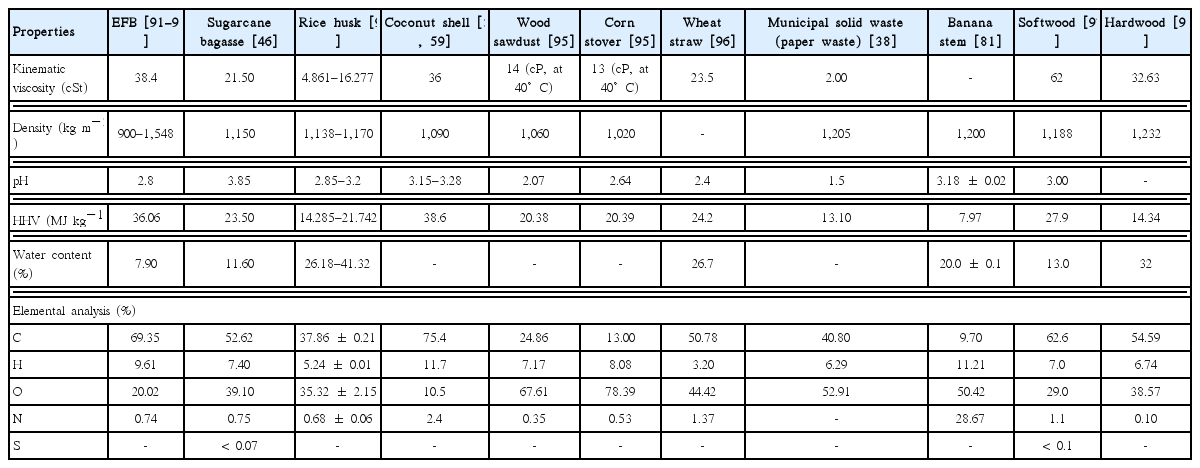Compilation of liquefaction and pyrolysis method used for bio-oil production from various biomass: A review
Article information
Abstract
In this paper the authors provide comparative evaluation of current research that used liquefaction and pyrolysis method for bio-oil production from various types of biomass. This paper review the resources of biomass, composition of biomass, properties of bio-oil from various biomass and also the utilizations of bio-oil in industry. The primary objective of this review article is to gather all recent data about production of bio-oil by using liquefaction and pyrolysis method and their yield and properties from different types of biomass from previous research. Shortage of fossil fuels as well as environmental concern has encouraged governments to focus on renewable energy resources. Biomass is regarded as an alternative to replace fossil fuels. There are several thermo-chemical conversion processes used to transform biomass into useful products, however in this review article the focus has been made on liquefaction and pyrolysis method because the liquid obtained which is known as bio-oil is the main interest in this review article. Bio-oil contains hundreds of chemical compound mainly phenol groups which make it suitable to be used as a replacement for fossil fuels.
1. Introduction
The search for cleaner energy sources is expanding each day due to the increasing of population and urbanization. Major energy resources such as petroleum, coal and natural gas might be depleted in the future. Global Energy Statistic reported that the overall energy demand is predicted to increase by 50% compare to energy demands reported in 2015. Besides that, burning of this energy sources can cause atmospheric pollution like global warming, acid rain and air pollution. With growing concerns for fossil fuel depletion and environmental threat, there is a strong interest in exploring renewable materials such as sunlight, wind, water and biomass as alternative feedstock for energy sources.
Biomass is readily available and renewable; it does not contain nitrogen and sulfur and does not affect the overall CO2 concentration in the atmosphere. Hence biomass is considered to be a good source of energy.
2. Biomass
2.1. Definition
Biomass is an organic material originated from plants, animals, and microorganisms which is non-fossilized and biodegradable. Biomass also comes in the form of products, byproducts, residues and waste from agriculture, forestry and related industries as well as the non-fossilized and biodegradable organic fractions of industrial and municipal solid wastes. Gases and liquids recovered from the decomposition of non-fossilized and biodegradable organic material also can be considered as biomass [1].
2.2. Resources
Biomass exists in two forms, woody and non woody. The woody biomass originates from plants while non-woody form originates from excess waste of animals, industry and crops. Biomass feedstock can be used in the form of liquid fuels, heat, electric power, and bio-based products. Fig. 1 shows most common biomass feedstock [2].
2.3. Biomass Resource in Asian and European Countries
Biomass is a renewable resource that is used to replace petroleum for the production of steam, heat and electricity. There are several Asian and European countries that have been using biomass as a source of energy such as United Kingdom, Spain, China, Kenya, Finland, Brazil, Sweden, Malaysia, Thailand, Pakistan and India. Biomass that is used in these countries is tabulated in Table 1.
2.4. Composition of Various Biomass
Lignocellulosic biomass has varying amounts of cellulose, hemi-cellulose and lignin [18]. Hemicelluloses are a polymer constituted of sugar units. Cellulose is a glucose polymer which contain (1, 4)-D-glucopyranose units link with 1–4 in the β-configuration. Hemicellulose is different from cellulose, as it consist of primarily xylose and other five-carbon monosaccharides[19]. Lignin consists of cross linked, three-dimensional polymer formed with phenyl-propane units. Generally, lignocellulosic biomass consist of 10–25% lignin, 20–30% hemicelluloses, and 40–50% cellulose [20]. The total amount of every component in lignocellulosic biomass is important to determine how effective the biomass can be converted into green fuels or valuable chemicals [21]. The weight percent of cellulose, hemicelluloses, and lignin varies depending on the type of biomass. Table 2 shows the compilations of lignocellulosic contents in different type of biomass.
2.5. Elemental Composition and Physical Properties of Various Biomass
Analysis of fuel is represented by the elemental composition (C, H, O, N and S), ash content, moisture content and higher heating value (HHV). The elemental composition of biomass is analyzed to evaluate the capability of the biomass to produce high value of bio-oil. The elemental analysis and physical properties of biomass is tabulated in Table 3. Table 3 illustrates the analysis of 11 types of lignocellulosic biomass.
2.6. Compilation of Various Biomass Produce Bio-oil by Liquefaction and Pyrolysis Method
Table 4 represents the compilation of 11 types of lignocellulosic biomass used to produce bio-oil from recent research works which is 5 y back (2013–2018). These compilations mainly focus on the production of bio-oil by using liquefaction and pyrolysis method with varied operational conditions. Table 4 lists all the parameters that have been investigated from previous research such as types of reactor and process, operational conditions, pressure, temperature, and yield. From the table it can be deduce that several types of process have been implemented by researchers, for instance hydrothermal liquefaction, microwave pyrolysis, and slow pyrolysis, but the most frequent process used are fast pyrolysis. Fast pyrolysis process is favorable as it can maximize the yield of bio-oil approximately about 80% based on dry feed and operational conditions used. Liquefaction process is less attractive among researchers compare to pyrolysis process as it produce lower yield of bio-oil (between 20–55 wt%) and requires additional catalyst or other reactants to facilitate the process which is major drawback. Based on the compilation most of pyrolysis process takes place in a fixed bed reactor at atmospheric pressure within temperature range of 450°C to 600°C. Fixed bed reactor is more effective compared to other reactor designs as it consist of ideal plug flow behavior, lower maintenance cost and reduce loss due to attrition and wear [42]. The highest yield of bio-oil is recorded from rice husk, coconut shell, and softwood which are at 70.0%, 75.74%, and 74.1%.
2.7. Properties of Bio-oil from Various Biomass
Bio-oil is the product of depolymerization of biomass building blocks which are hemicelluloses, cellulose and lignin. Hence elemental composition of wood bio-oil is similar to biomass rather than petroleum oil. Table 5 shows comparison between properties of bio-oils from different feedstock. Water content in bio-oil comes from the original moisture in biomass and also from the product after pyrolysis process. High amounts of water content in bio-oil are considered as disadvantage for its usage as a fuel. The accepted range of water content in bio-oil is between 25–26 wt% [87]. Table 5 deduce that the water content in the bio-oil extracted from empty fruit bunch (EFB), sugarcane bagasse, banana stem and softwood are in acceptable range. On the other side bio-oil of rice husk, wheat straw and hardwood shows high amount of water content and may not be suitable to be used directly without further improvements. Density of bio-oil from all biomass was found to be in between of 900 to 1,548 kg/m3. These values are considered higher compare to the density of crude oil which around 860 kg/m3 [88]. High density values means that the bio-oil has high amount of oxygen instead of polycyclic aromatic which presence mostly in hydrocarbon oil. Bio-oil from woody biomass usually has low pH value which is around 3.7 only because it contains some organic acid such as acetic and formic acid [89]. Table 5 deduces that the pH of bio-oil from all the biomass is between 1.5–3.85 which is in the range of proposed literature. The proposed viscosity for bio-oil derived from biomass is 40–100 cP. Table 5 shows that the viscosity of bio-oil varied over a wide range depending on the type of biomass and also experimental conditions. The heating value of all the bio-oil is very low compared to heating value of heavy fuel oil which is at 40 MJ/kg [90]. This may due to the high amount of water content which results in the decreasing of energy in the oil.
2.8. Bio-oil Utilizations in Industry
Bio-oil is obtained from the burning of dried biomass in a reactor in the absence of oxygen at temperature about 500°C with sub-sequent cooling. The physical appearance of bio-oil is dark-brown liquid with a strong odor [99]. Bio-oil produced from fast pyrolysis and thermal liquefaction can be utilized in many sectors. It can be used as heat and power generation, liquid fuels, and raw chemical products. Chemicals extracted from bio-oil are mostly used in construction, food flavorings, resins, adhesives, and agrichemicals. Table 6 describes the application of bio-oil in industry and its function.
3. Conclusions
It is crucial to select the best process to transform biomass into bio-oil which can be a viable alternative to fossil fuels. Thermo-chemical liquefaction and pyrolysis method is the best process to achieve this goal. From the literature it can be concluded that pyrolysis method has gained a huge amount of interest compare to liquefaction method as it produces large quantity of bio-oil and the quality is much better. Fast pyrolysis method with fluidized bed and fixed bed reactor has been used the most by researchers as it produce higher yield of bio-oil. This review article conclude that high yield of bio-oil was obtained from palm EFB, sugarcane bagasse, rice husk, coconut shell, wood sawdust, corn stover, wheat straw, municipal solid waste, banana stem, softwood and hardwood is at atmospheric pressure and temperature range between 400°C to 615°C. Hydrothermal liquefaction, microwave pyrolysis and slow pyrolysis method which is another way to obtain bio-oil, is also a process of interest. Low quality of bio-oil properties such as high-water content, low pH and heat value limits its utilization. Hence further improvisation of bio-oil is required in order to produce a high-grade of liquid fuel.
Acknowledgments
The authors would like to express deep gratitude to Dr. Farzana Kabir Ahmad from University Utara Malaysia (UUM) who constantly gives encouragement throughout the preparation of this review article.







